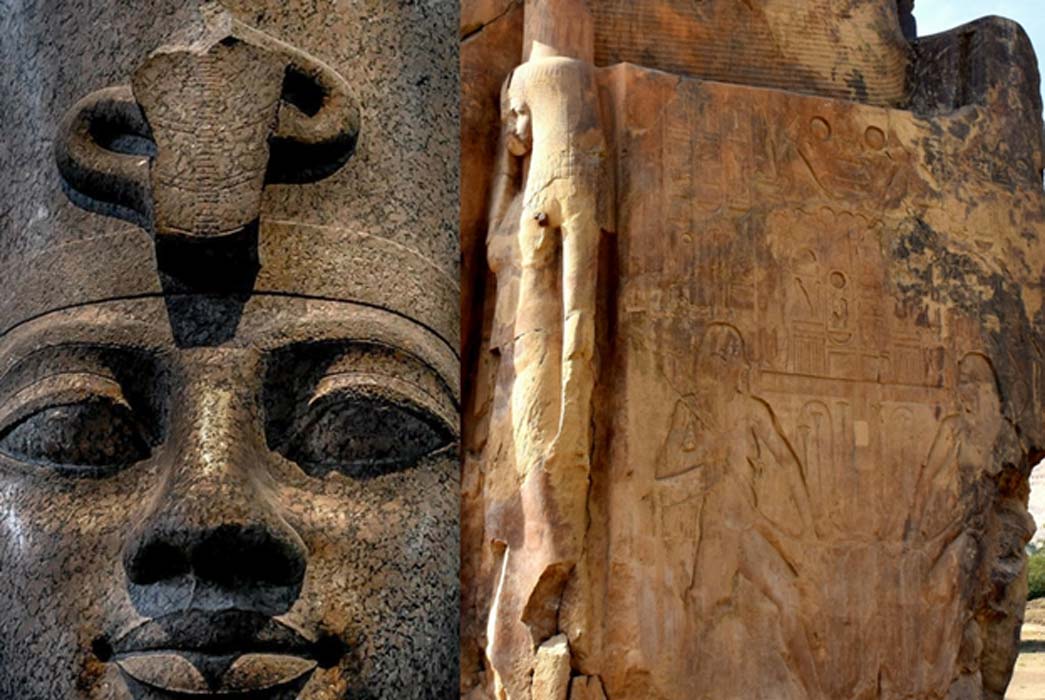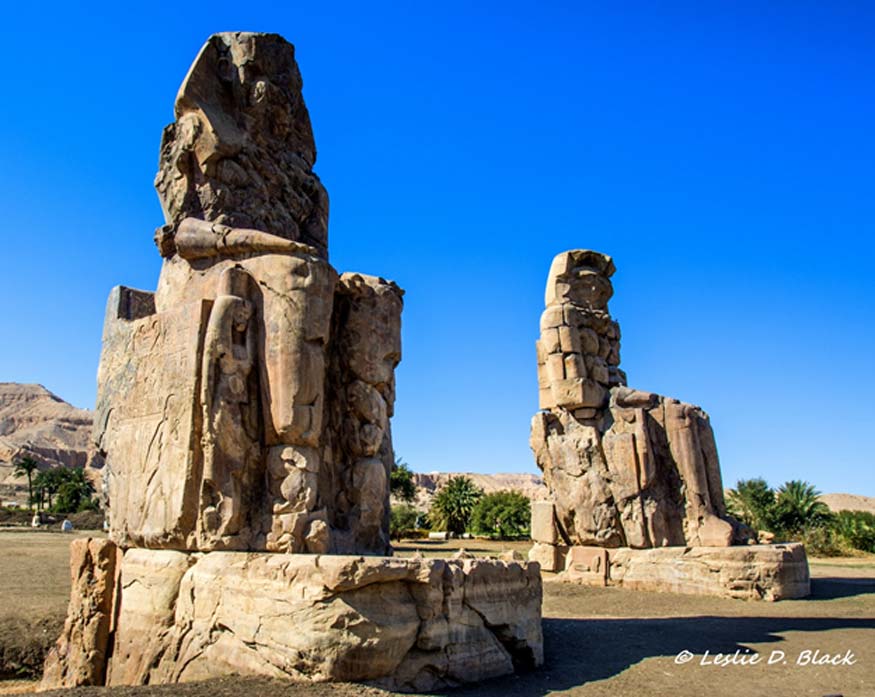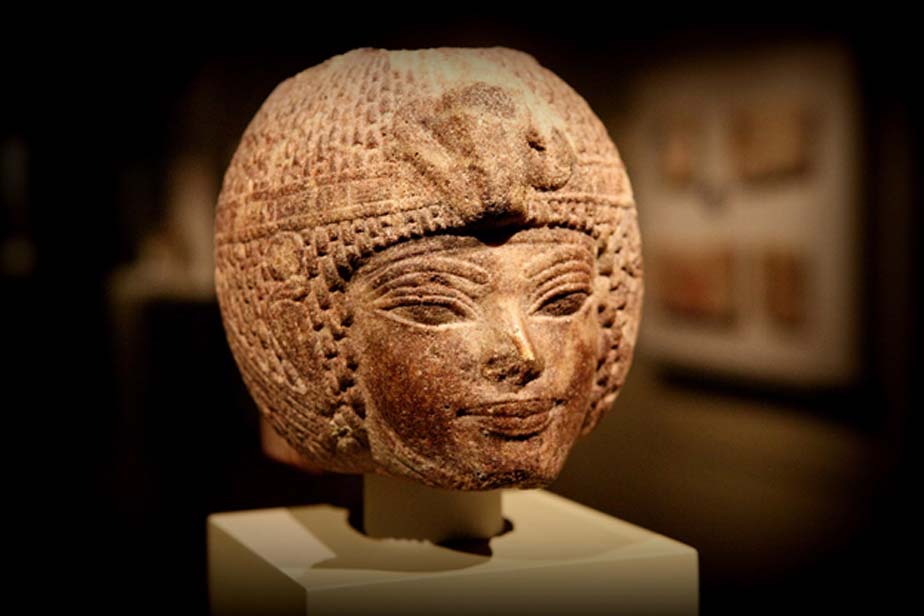
Amenhotep III, The Man and his Monuments: Age of Empire and Architecture –Part II
With the empire witnessing an unprecedented era of peace and prosperity, Amenhotep III embarked on a grand building project that spanned the length and breadth of Egypt. The monuments he commissioned were breathtaking in scope, scale and artistry. Nebmaatre dedicated temples and shrines to several gods, primarily Amun-Ra, and also to himself—but most important of all, he built sanctuaries and lakes in honor of his beloved wife, Queen Tiye.

The gigantic Colossi of Memnon, made of quartzite sandstone, depict the enthroned Pharaoh Amenhotep III in the first pylon of the “Temple of Millions of Years” in the Theban Necropolis. Kom el-Hetan, near Luxor.
Race to Save History
German archaeologist, Dr Hourig Sourouzian, who heads the project to conserve the Amenhotep III mortuary temple, writes: “Following an earthquake in 27 BC the northernmost of the colossi collapsed, and, at sunrise, began to produce an eerie musical sound that early Greek travelers interpreted as the mythical half-mortal Memnon calling out to his mother Eos, goddess of the dawn. Visitors came from far and wide to hear the song, including the Roman Emperor Hadrian and the Empress Sabine, who had to wait several days before the statue called out to them in 130 AD. The bust was restored during the Roman period and mounted on huge sandstone blocks. According to legend, Septimius Severus (r. 193 -211 AD), seeking to repair the colossus, inadvertently silenced it forever. It was from this strange phenomenon - thought to have been caused by a daily rise in heat and humidity - that the statue took its name, which now applies to both of the first pylon figures.”

Detail of a calcite statue shows Pharaoh Amenhotep III with a solar form of the crocodile god Sobek, likely Sobek-Horus. It was discovered in the Sobek Temple at Dahamsha. Later, Ramesses II excised the king’s name from this sculpture and replaced it with his own. Luxor Museum.
As far as human intervention causing the destruction of the temple is concerned, by all counts it seems to have been a form of ‘reverential usurpation’ by which the new kings hoped to acquire or take upon themselves the spiritual mantle of their more illustrious predecessors. For example, the favorite victims of Ramesses II were Amenhotep III and his own father Seti I.

Most probably produced in the last decade of his reign following his first Heb Sed or jubilee, this brown quartzite head shows Amenhotep III wearing the round wig. The king is presented with youthful features. Cleveland Museum of Art. Cleveland, Ohio. (Photo: Sam Howzit)





